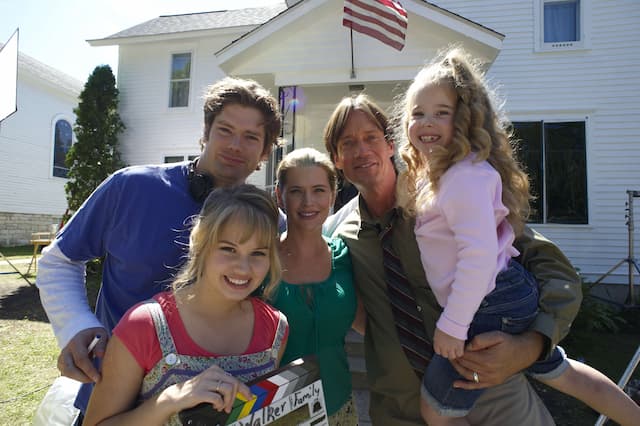Sacred Suffering and a Cancer Update

Editor’s note: Several of you have asked for an update on how Colleen Chao is doing. You may have met her at Revive ’21 or through her video, and recall that she has terminal cancer. What follows is an update from Colleen herself, originally published on her blog at colleenchao.com. Please join us in continued prayer for this sweet friend of Revive Our Hearts. —Laura Elliott
March 8, 2022
Hello, dear friends!
Thank you, thank you for your continued messages of love and encouragement. I’m mortified at how behind I am in replying to you all, but please know how much your words care for me (for us) and what a lifeline they are. I know your lives are crazy-busy, so it makes your gift of time and encouragement all the more precious to me.
I’ve appreciated some of your questions in recent months, and I thought it might be helpful to make this update into a Q & A of sorts. I’ve concluded that cancer and its treatments are just plain ol’ confusing and difficult to make sense of (much less explain), and I’ve done a marvelous job of throwing out just enough details and terminology to cause mass confusion. Ha! So I’ll try to sort some of it out for you here, and you can just read the ones that interest you and skip over the others:
Wait, what? You’re still doing chemo?
Yes, it’s totally confusing! Back in July, I started on a trifecta of chemotherapy: Taxol, Herceptin, and Perjeta. Taxol is the drug that kills rapidly dividing cells, which is why it’s so effective at killing cancer cells (as well as hair, brows, lashes, etc.). But because it is so harmful to the body, the standard of care limits Taxol to twelve doses. I had my twelfth dose at the end of November, so now I’m on Herceptin and Perjeta only, and those are administered every three weeks instead of every week.
Herceptin and Perjeta aren’t technically chemotherapy by definition, but they are administered and referred to as if they are. They are “targeted therapy medicines that treat HER2-positive breast cancer by blocking the cancer cells’ ability to receive growth signals.”1 HER2 is “a protein called human epidermal growth factor receptor 2,″2 and if I understand correctly, about one in five breast cancer patients are positive for this receptor like I am.
Herceptin and Perjeta still make me sick and tired but much less so than Taxol. I have daily waves of energy that I ride (and enjoy!) in between trips to the bathroom and the recliner. Haha.
Taxol will be back on the table once hormone therapy cannot hold the aggressive cancer at bay. But for now, I’m so grateful for a break! And for The Return of Some Hair.
Why can’t chemo and surgery get all the cancer like it did last time?
It’s a great question. Because chemo kills only rapidly dividing cells, it can effectively kill (or, at the least, significantly shrink) localized cancer tumors. Think of it as cleaning crud out of a toilet. The crud is contained in the bowl, and a good cleaning solution and some elbow grease will do the job.
But cancer that is widespread (referred to as “distant”) in the body means that not only are the cancer cells in widespread circulation, but the cancer stem cells are as well—and those stem cells are NOT rapidly dividing, therefore they cannot be killed by chemo nor removed by surgery. They will continue to grow cancer wherever they circulate. As opposed to that mess contained in a toilet bowl, this is akin to cleaning up a major sewage spill in the ocean.
In 2017, my cancer was found only in my right breast, and while it was incredibly aggressive and fast-growing, it was contained—it had not yet spread to my lymph nodes and beyond. So the chemo effectively shrunk the tumor to a size that could safely be removed surgically.
As of spring 2021, the cancer stem cells are present all over my body and can’t be eradicated by chemo or surgery. So chemo can temporarily hold back the onslaught, but eventually the cancer finds new pathways around the drugs.
Why not stop the toxic treatments and get to the root of your cancer with natural methods and treatments?
Again, a great question—and one we’ve asked ourselves. This was a hard series of conversations and decisions at the outset of both diagnoses—but especially with this terminal diagnosis. I’m super-duper sensitive to most medicines, so I’ve always tended toward natural cures and treatments. And I long ago pooh-poohed sugar and processed foods, chemical cleaners in our home, aluminum deodorants, etc. In other words, I’m a fan of all things natural.
But every cancer diagnosis is complex and unique, and what works for one person may not work for another. With my particular diagnosis and the aggressive nature of my cancer, I don’t have the luxury of time to experiment with a zero-medicine or extreme-natural-treatment approach. Which is why we’ve decided to wed the two worlds–making the most of both allopathic and naturopathic treatments.
What’s the purpose of your hormone therapy?
My hormone therapy is two-pronged: there’s an every-third-month Zoladex injection (it shoots what looks like a big grain of white rice into my belly), which shuts down my ovaries (and therefore the estrogen that feeds my cancer), and there’s a daily oral pill that kills the circulating estrogen in my body (that originates in the gut, etc.).
Starving the cancer of estrogen is another way of slowing its growth, so while I absolutely loathe the side-effects of hormone therapy, I’m grateful for it.
How often are you getting scans done?
I love my oncologist’s approach to scans at this stage of things: we let my symptoms or the appearance of new masses dictate my scan schedule. So if my appetite decreases, or I experience new pain, or I find a new mass, etc., we run the appropriate scan. Last week I was in for another ultrasound—and a follow-up ultrasound plus a biopsy may be next. But I’m grateful we’re not just running superfluous scans every few months because (1) they are crazy expensive, and (2) I am so, so weary of nonstop appointments/tests/procedures and am oh-so-happy to skip the unnecessary ones.
What timeline did the doctors give you?
Here’s the thing: We’ve hesitated to share any specific timeline because it isn’t necessarily something we are banking on, nor does it feel helpful for anyone else to bank on. (What if God takes me before then? Or gives me more time?) The first timeline I was given last June quickly felt outpaced by how swiftly the cancer was overtaking my body. I was pleading with God to give me another year—to let me make it to Jeremy’s 11th birthday (this July). Since then, I’ve swung back and forth between “I don’t think I have much longer” and “I just might have longer than I thought”—depending upon test results, how my body feels, the discovery of a new mass, etc. It’s a bizarre and bitter and beautiful experience to be so constantly aware of my end, to have disappointing test results follow on the heels of good ones, to fight so hard for some more time here even as I feel weary-to-the-bone of fighting. To the marrow of my soul I feel the apostle Paul’s struggle in his letter to the Philippians:
Now if I live on in the flesh, this means fruitful work for me; and I don’t know which one I should choose. I am torn between the two. I long to depart and be with Christ—which is far better—but to remain in the flesh is more necessary for your sake. (1:22–24)
Of course, once I begin to decline, we will have a much clearer idea of my timeline and will share specifics with you then. That feels heavy to write, so I pray there will be much grace and peace as you read this.
~ ~ ~
This Is a Sacred Suffering
I’m sitting in chemo chair #13 as I write this paragraph, listening to the man next to me talk in painfully slurred speech about his most recent surgeries and how his cancer has come back. Two chairs down is a woman who is here for the first time. (There is nothing quite like your first chemo infusion.) Here at St. Luke’s, you can have a friend or family member come in and sit with you during your first infusion (but COVID rules prohibit any visitors after that), yet this woman’s friend didn’t want to stay—she left to take her car in for a tune-up. I listened as the nurse explained all the possible side effects of the drugs being infused into this new cancer patient’s body—as she sat there all alone.
I could tell you story after story like this. You could cut through the suffering here with a knife. And I’m reminded that this is why God entrusts suffering to his children—because it is the way to enter in with and love a world that is suffering.
Why would I ask to be delivered from this awful diagnosis if it means bringing Jesus’ hope and light and love to the darkest corners of this chemo ward and beyond? Why leave the suffering to those who are alone and without the love of Jesus? We who know and love Jesus are here for just this purpose—to lay down our lives to love others for Him.
We’re so enamored with ease and comfort and health and beauty and longevity and financial security and influence and success. (I’m as guilty of this as the next person.) But the way of Jesus is the way of the cross—and the way of the cross is the way of the empty tomb, and the empty tomb means death defeated and resurrection power! To avoid suffering is to miss out on Christ’s life powerfully at work in us. It’s to miss out on caring deeply for others, in ways that will be felt into eternity.
You, dear friends, have your own sacred sufferings, and I want to encourage you as I’m encouraging myself today: let’s wrap our arms around the cross we bear, the cross we bear with Him, the cross that leads to everlasting joy—not just for ourselves but also for all those our lives touch. Not one moment of our suffering is wasted. It is working miracles behind the scenes. It is “preparing for us an eternal weight of glory.” There is so much purpose and hope to be had today.
So grateful to be on this journey with you. You all are precious beyond words to us—
Colleen
The weightiest end of the cross of Christ that is laid upon you, lieth upon your strong Savior. For Isaiah says that in all your afflictions he is afflicted [63:9]. . . . Glad may your soul be, even to walk in the fiery furnace, with one like the Son of man, who is also the Son of God. Courage up your heart; when you tire, he will bear both you and your burden [Psalm 55:22]. —Samuel Rutherford, Letters (1628)
1 https://www.breastcancer.org/research-news/perjeta-plus-herceptin-and-chemo-shows-benefits
2 https://www.mayoclinic.org/breast-cancer/expert-answers/faq-20058066










